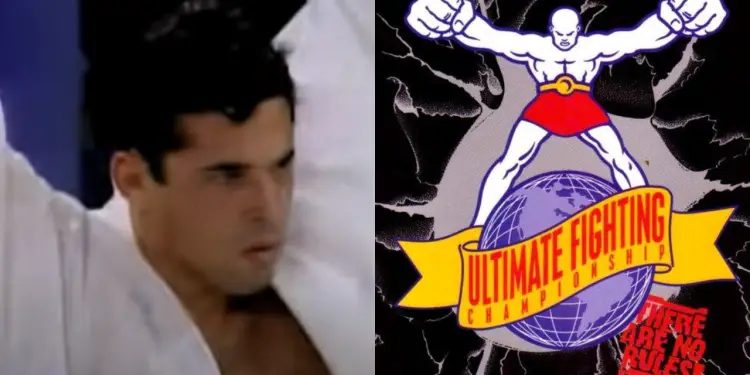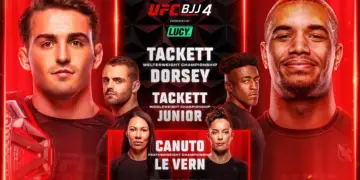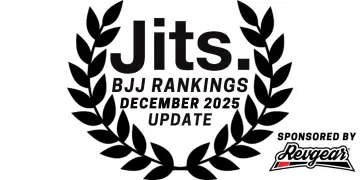UFC 1 took place on November 12th, 1993 and by the end of that night Royce Gracie had managed to secure his legacy forever. This was back in a time when MMA didn’t really exist in the same way it does today, although it was slowly starting to come together. History is littered with examples of martial artists from different disciplines meeting together to determine who was the better fighter or who had the best style, and the Gracie family had already spent the better part of a century attempting the same. The original UFC was the brainchild of Rorion Gracie and promoter Art Davie, who decided to put together a single-night tournament with martial artists of different styles and a member of the Gracie family in order to prove the efficacy of BJJ.
The tournament would forever change the face of combat sports, as it gave birth to the world’s biggest MMA organization and over the years that followed it formalised the ruleset that is most widely accepted for the sport today. That first event is remembered fondly by fans of both BJJ and MMA, and it served as the introduction to either of those sports for many people. There were eight competitors in the tournament and a total of eight fights on the night, including the alternate bout. None of these fights lasted longer than five minutes and Royce Gracie emerged victorious at UFC 1 by finishing three opponents in a combined time of 4:59, so let’s take a look at his performances.
Or for more of our articles looking into moments throughout BJJ history, visit our throwback archives.
Royce Gracie And His Legendary UFC 1 Performance
Opening Round: Royce Gracie v Art Jimmerson
The first man who stood opposite Royce Gracie at UFC 1 was Art Jimmerson, a boxer who is perhaps best-remembered for the fact that he decided to wear a single boxing glove during the fight. Jimmerson was a former national Golden Gloves boxing champion at middleweight and at the time of the event, he had put together a respectable 29-5 professional record in the sport. Jimmerson was riding a 15-fight winning streak in his usual sport so on paper, he should have been a tough challenge for Gracie on the feet. The pair circled each other for a while and it was clear that Gracie was hesitant to commit to a striking battle, throwing a few kicks that missed his opponent.
After one kick, he shot in for a double-leg and landed in side control before immediately stepping into mount. Gracie grapevined his legs and controlled his opponent from mount, with Jimmerson attempting to escape. After a few seconds of him being unable to get from underneath Gracie, he tapped out to the positional control. This would be Jimmerson’s one and only MMA fight, and he returned to professional boxing less than two months later. He did continue boxing over the next few years though, only retiring in 2002 with a 33-18 record across his career.
Semi-final Match: Royce Gracie v Ken Shamrock
The semi-final match between Royce Gracie and Ken Shamrock at UFC 1 actually set the stage for one of the sport’s earliest rivalries, as these men fought another two times after this. Shamrock actually had MMA experience, as he won a legitimate mixed rules fight in 1992 and had already put together a 3-0 record fighting for Pancrase over the two months leading up to this event. Shamrock had a great deal of wrestling experience and he actually had much more knowledge of submissions than most of his generation at the time. He even won his opening round match at UFC 1 against Patrick Smith by locking up the first heelhook in the promotion’s history.
Gracie showed much less respect for Shamrock’s striking than he did Jimmerson’s, and he immediately shot for a takedown when the match started. Shamrock sprawled heavily though and almost turned Gracie over into side control, but he managed to scramble back to his feet and quickly pulled guard to return to the mat. After some heel-kicks from the bottom, Gracie attempted to control an arm and Shamrock escaped by conceding top position. Shamrock held onto a leg and tried to use that to wrestle up but Gracie ended up securing a rear-naked choke, with Shamrock tapping as a result.
Royce Gracie had booked his place in the final of UFC 1 and handed Ken Shamrock his first loss in MMA, although he wasn’t leaving the sport any time soon. Shamrock improved his record to 17-3 and won the inaugural Pancrase Openweight title, earning the right to meet Gracie for the second time at UFC 5. They fought to a draw in the longest match in UFC history, a single round that was 36 minutes long. He continued fighting for a long time after that and fittingly retired in 2016 with the final fight of the Gracie v Shamrock trilogy, which Gracie won by TKO in the first round.
UFC 1 Final: Royce Gracie v Gerard Gordeau
This was the moment that everyone watching the live broadcast of UFC 1 had been waiting for, and the final fight of the night was set to be Royce Gracie v Gerard Gordeau. While Gordeau was undoubtedly a striker first and foremost, he actually had a surprisingly well-rounded skillset for the time. He was a Karate black belt first, who ended up rounding out his abilities by studying boxing, Muay Thai, wrestling, and Judo at different points during his martial arts career. He was no stranger to competition either as he was a Dutch Karate champion from 1978 to 1985, a European Savate Champion from 1988 to 1991, and a World Savate Champion in 1992.
Gordeau won both of his fights at UFC 1 by TKO in a combined time of 1:25 and famously knocked Sumo wrestler Teila Tuli’s teeth out in the opening round, leaving two of them embedded in his foot for the rest of the night. There was a short feeling out period between Gracie and Gordeau before Gracie used a front leg-kick to set up a takedown, but Gordeau defended the initial attempt and lifted him up into the clinch. Gracie attempted to follow that up by hooking the leg but could only force Gordeau into the cage instead of taking him down. They wrestled against the cage but Gracie maintained double-underhooks and eventually managed to take the fight to the ground.
Gracie quickly stepped into mount and started landing some short headbutts to his opponent, while Gordeau was clinging onto him. Gracie used his forearms to frame against Gordeau’s face and break free of his grips, taking his back as soon as he turned to escape. Gordeau tried to defend for a while but Gracie sank in the rear-naked choke to force the tap, although he didn’t release it until long after Gordeau had tapped. This was because Gordeau had allegedly bit the ear of Gracie while underneath mount, and he wanted revenge.
This wasn’t the last time that Gordeau would compete in MMA, as he returned at Vale Tudo Japan two years later and fought the legendary Yuki Nakai. In that fight Gordeau repeatedly used eye-gouges that would end up costing Nakai his eyesight, although he was still submitted regardless. He retired from the sport with a 2-2 record in 1995 and there was plenty of criticism surrounding his actions in those fights against Gracie and Nakai. Royce Gracie on the other hand was crowned the champion of UFC 1 and had just begun his legacy in the sport.
What Happened To Royce Gracie After UFC 1?
After his flawless performance at UFC 1, Royce Gracie returned to defend his title four months later at the promotion’s next event on March 11th, 1994. He repeated his achievement at UFC 2, where he faced a larger bracket and ended up finishing four men that night to win another tournament. He came back again at UFC 3 on September 9th, 1994 but wasn’t able to defend his status as the reigning champion this time around. He won the opening round match by submission but then withdrew from the rest of the tournament due to exhaustion. UFC 4 came around on December 16th, 1994 and Royce Gracie returned once again, submitting another three opponents to regain his status as the reigning tournament champion and improving his record to 11-0.
UFC 5 marked his first non-tournament fight, as he took on Ken Shamrock in a rematch for the inaugural superfight championship. This was the pair’s 36-minute fight that ended in a draw due to the lack of judges, and this was the first time that Royce Gracie had not finished an opponent in his MMA career. Gracie left the UFC after this and didn’t compete in MMA for almost five years. In 2000 he chose to compete for PRIDE instead, where he experienced significantly more mixed results than he did earlier in his career. Gracie won his first fight there but was also handed his first professional loss by Kazushi Sakuraba in a legendary fight that took place over the course of an hour thanks to modified rules.
After this loss he disappeared from competition again, for almost 3 years this time. He then fought in Japan on their annual New Year’s Eve events in 2003, 2004, and 2005. He won one fight but experienced draws in the other two, as both of them took place under modified rules that did not allow for a judge’s decision. With 13 wins, 3 draws, and just 1 loss on his professional record Royce Gracie decided to return to the UFC after over a decade’s absence. He challenged the reigning UFC welterweight world champion Matt Hughes at UFC 60 on May 27, 2006 and suffered a convincing TKO loss in the very first round.
Gracie then took another fight in Japan on June 2nd, 2007, a rematch against the first man to defeat him; Kazushi Sakuraba. He won a decision against Sakuraba and although he tested positive for anabolic steroids after the match, the result remained as such. He retired for almost a decade before returning to fight one final time at Bellator 149 on February 19th, 2016. It was the trilogy bout with Ken Shamrock and he settled the score with a first-round TKO win, retiring from MMA for good in order to travel the world teaching Jiu-Jitsu.













